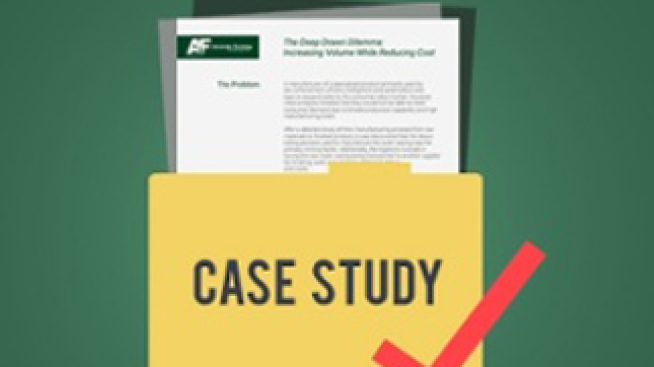The Technical Benefits of Deep Drawing

The Technical Benefits of Deep Drawing
The Technical Benefits of Deep Drawing
January 5, 2016

Unlike other manufacturing and industrial processes, deep drawing offers several technical benefits that make deep drawn parts highly sought after by various industries and assemblers. Naturally commercial benefits abound as well, but it is the technical aspects that make the commercial benefits worthwhile. In simple terms, deep drawing is the process by which linear stress is applied to a material to draw it through a die or several dies, thus producing the final part. While some specific benefits from the process are material dependent, overall the actual process allows for diverse materials to be used, unless specific to the application. Whereas, other processes require specific materials to be used to provide the same end product.
Benefits of Deep Drawing
Deep drawing, or the process by which material is drawn through a die or dies, offers a cost effective and highly efficient solution for making all manner of individual parts of various sizes. Some of the more technical benefits include:
- Seamless products
- Faster Cycle Times
- Accurate and Precise Parts or Products
- Diverse Materials
Deep drawing produces parts that have no seams or defined connective points that can interfere with the ultimate end product. Given that one of the other benefits of deep drawing is the varied sizes that can be accommodated, even large parts are able to be produced without having seams or connection aspects. Additionally, by not having seams or connective points, the failure potential of the drawn part is significantly reduced.
Detailed Precision
Deep drawn products are able to be produced to exacting and precise standards. In addition to the highly accurate resulting part, this precision is accurately reproduced part after part, reducing the liability of potential quality control issues in both the part and the ultimate destination product. Producing a seamless part through other processes with a high degree of accuracy and precision increases the individual unit costs, whereas one of the technical benefits of deep drawing is the superior accuracy and precision that can be maintained over the entire line of parts.
Diverse Materials and Faster Cycle Times
Deep drawing can accommodate a range of metals, therefore allowing for more centralization of parts required. When coupled with the fact that the deep drawing process facilitates faster cycle times, necessary adjustments can be made quickly and efficiently without disrupting or delaying the overall production or delivery of the end product.
The technical benefits of deep drawing clearly show the advantages of this process over that of other manufacturing processes. For industries that require highly specific and precise parts that are seamless and can be made in diverse materials with faster cycle times, deep drawing is the process to depend on. Deep drawing processes are cost effective and adaptive to you and your company’s individual needs and requirements.


